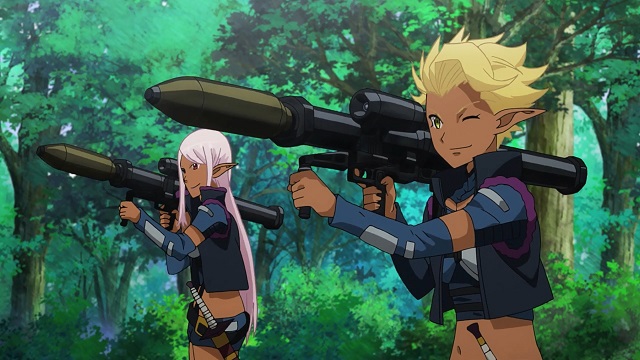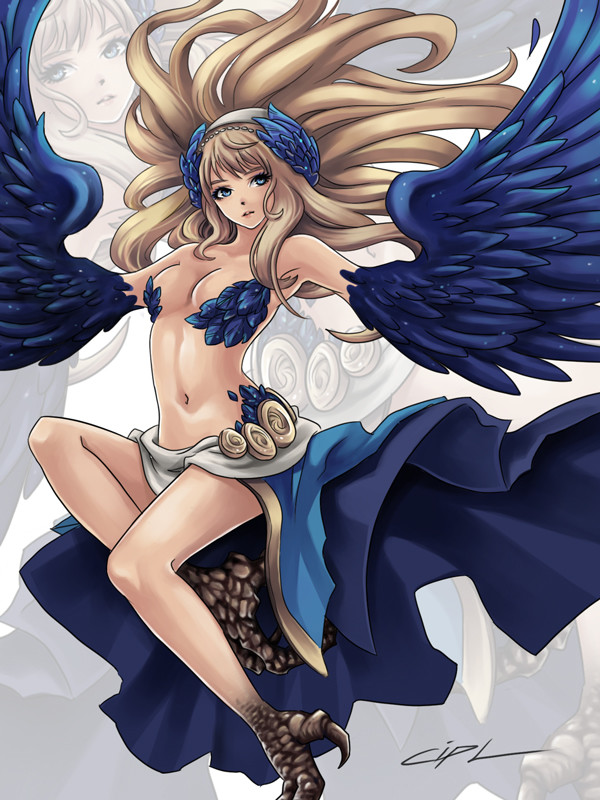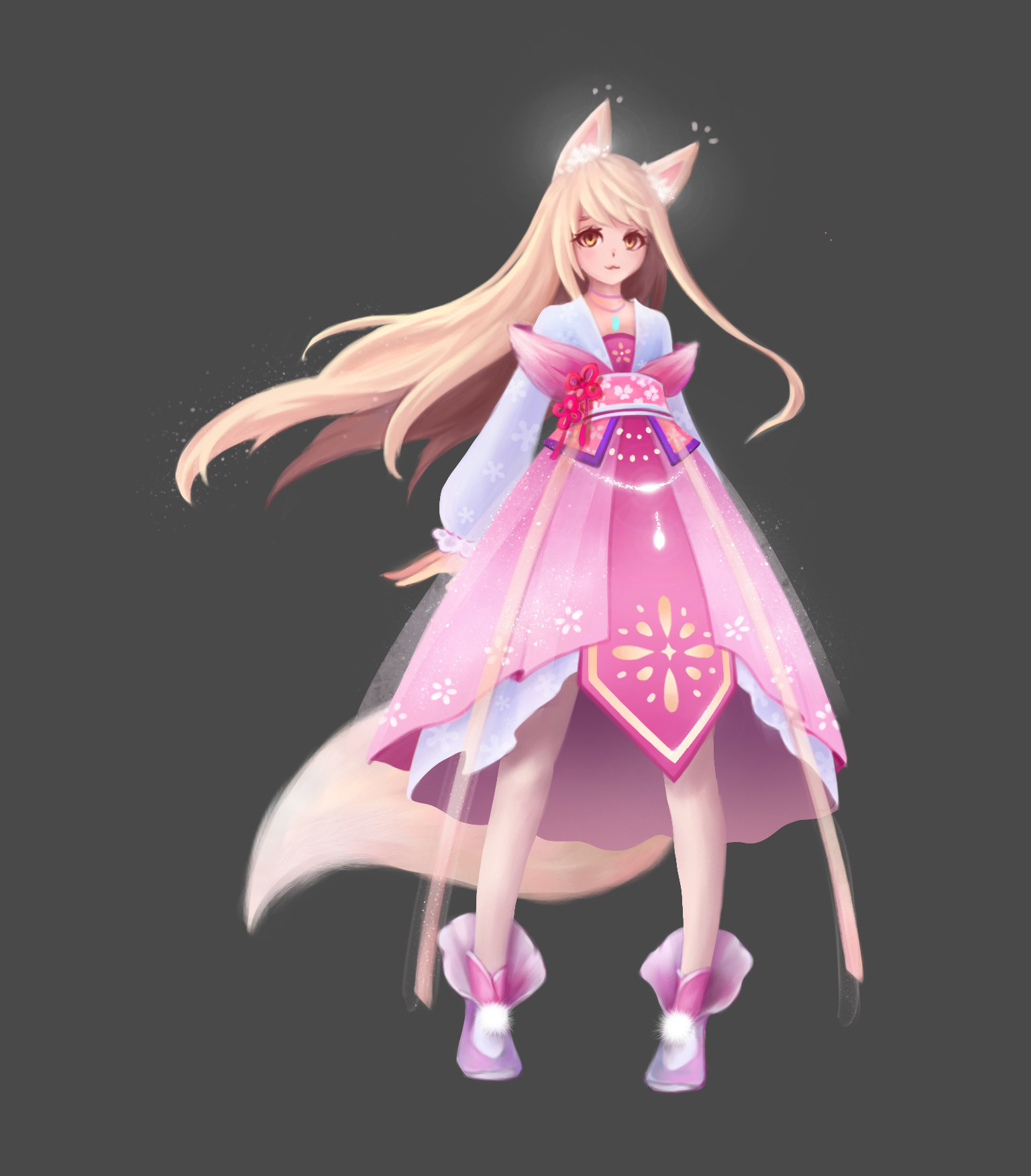Melikit Tenrisi Akkanun'in
Sacred Domain of Akkanun

Absolute imperial monarchy, dynastic.
In the rigidly hierarchical Akkanid society, power is concentrated in the ruling family, whose head holds absolute sway over all matters of the realm. Despite the dynasty being furthered through female heirs by matrilineal descendance, in accordance with tervigen customs the effective ruler is the oldest male, usually the current queen’s elder consort; his younger peers act as his Vizirs, a combination of trusted advisors, lieutenants and bodyguards. The queens themselves typically take on a role akin to that of chamberlains, managing the household and keeping the excesses of the court in check.
The most immediate executors of the ruler’s will are the gradasi, the caste of warrior-nobles that tops the pyramid of Akkanid social strata. Their ranks supply the emirs and officials that govern the Domain’s provinces and subjugated states, as well as the consorts of successive queens. Directly following them is the colourful array of scribes, clergy, lesser administrators and military leaders, legislators, slave masters and other cogs and pieces of the great bureaucratic machine that ensures law and order are enforced throughout the land. While formally known as members of the royal court, only a fraction of their number actually resides in the capital, the majority acting as local representatives wherever the government maintains a presence.
Head of Government: Sultan Bayazid Haikin Agrameyn, Anointed Guardian of the Sacred Domain.
Economy: Although not primitive by any stretch, and indeed rather opulent, Akkanun’s economy remains based almost exclusively on the commerce and craftsmanship based in its sprawling urban centers, with industrialisation being sparse and overall prevented from developing to any significant degree by social conditions. The bulk of agricultural and other menial work is carried out by slaves and lower castes, for the most part in the employ of small landowners or the state itself - an arrangement which varies to lesser or greater extent from one emirate to another, depending on the original local culture, but remains mostly consistent throughout the Domain thanks to fairly stringent policies of stratification.
By contrast, regulations on trade are surprisingly liberal, allowing for an easy circulation of goods within Akkanun and relatively effortless ventures beyond its borders. Whilst originally intended to make trade a vector for cultural contact and integration, and thus consolidation of sovereign authority, these laws have allowed a drastic growth in the individual wealth of the higher castes, and by extension in the royal treasury built upon them. Notably, with a guaranteed steady influx of raw wares, and the thriving slave trade being abundantly fueled by blood taxes levied on provinces and tributaries, there is a continued incentive for skilled artisan labour to fill the niche of manufactured goods, which has led to virtually every free citizen family adopting some sort of craft as a source of income, whether minor or essential. Successful ventures can develop into wealthy and respected hereditary trade lineages with solid hopes of social mobility, but even the lowliest agrarian household with two or three chattel to its name enjoys the opportunity of sending one of its sons to the nearest bazaar every week to sell some of its homemade baskets and bring back a taste of the busy city life.
Population: ca. 87 million total. Largely peoples of subjugated realms, although a significant number is also concentrated in the sprawling cities of the tervigen homelands.
Primary Species: Tervigen: Midway between insectoid and reptilian, these creatures hail from the arid wastes and steppes of the southwest, seemingly finding themselves at home in these harsh territories. Their tough, carapace-like hides help them preserve body moisture as well as providing a sturdy natural protection, and the glossy membranes that give their eyes their distinctive golden hue dampen the light that strikes their eyes, allowing them to comfortably see in sunlight that would dazzle or blind humans. The unforgiving environment of their home has left the tervigen free of any squeamishness, and they will readily gobble anything they can get their hands on, be it animal, vegetal or even their own dead when nothing better is to be found.
All the while, though these features make them well-suited to life in their native lands, they also cripple their ability to adapt to foreign conditions. Cold or damp climates make them uncomfortable, and they are virtually blind in all but the clearest of nights, having to rely on hearing and the vibration-sense of their feelers.
Tervigen hatch from eggs which their females lay in clutches of between three and six. The ratio of male to female births is disproportionately high, and it is thus customary for women to have multiple husbands (generally two or three, and never more than five); the latter generally see each other as bond-brothers of sorts, although variations exist across local cultures. Psychologically, tervigen males tend to overall be more sociable, adventurous and combative, while females, who are likewise physically larger and stronger, are sedentary and territorial. This has led to the formation of an overarching social order where household authority is matriarchal, but men represent their families in public affairs, and thus hold official charges and positions.
Tzücomen Humans: As common as they are elsewhere in the southern regions of the New World, Tzücomen are by far the most widespread human ethnicity in Akkanun. Though historically descended from the Transtulanian Beyliks and to this day not entirely severed from their nomadic roots, centuries of tervigen rule have brought their culture closer to the broader norms of the Domain. As such, they are more inclined to settling than their northern kin, and those who do live on the move tend to migrate following regular cycles, usually tied to seasonal effects on agriculture and cattle-herding.
Grogar: With the once-major grogar realm of Agar Dûkh having been one of the first local nations to become a tributary of Akkanun, it is but natural that these beings should be as populous as the Tzücomen, if not more so, within the Domain’s confines. Although their status has allowed them to retain a greater share of distinctiveness to their customs and traditions, the Akkanid grogar have not remained untouched by the gradual mingling of its peoples, and many of their more recent social adjustments have come to mirror this, such as the sweeping adoption of Domain mercantile laws. The grogar’s hardiness makes them a popular source of köleceri, the caste of redoubtably zealous indoctrinated slave-soldiers that forms the backbone of the Sultan’s armies.
Other Minorities:Üarim: Inhabiting the northern conquered provinces of Akkanun, the prideful Üarim have taken ill to foreign domination, proving turbulent subjects at the best of times. While the heavy hand of tervigen domination has thus far quelled all attempts at revolt and secession, the advent of the Miranid horde presents a new peril, and numerous northerners have already taken the opportunity to join the march of their fellows rather than battle them in defense of the Akkanid holdings.
Strigoi: Mostly lone marauders crossing into the eastern provinces from Wulfram to prey on the populace, strigoi sometimes become themselves the targets of bold hunting parties who seek to capture and sell them to nobles and dignitaries as glorified pets or arena beasts - a perilous endeavour, especially when it earns the resentment of other night-dwellers across the border.
Daywalkers: Some enterprising and reckless potentates who keep a live strigoi have taken to forcefully breeding their monstrous captives with slaves to produce daywalker spawn. The offspring are raised to be blindly loyal to Akkanun, and become the most fearsome köleceri warriors at the Sultan’s disposal.
Culture: As a nation comprised of various holdings and subjects, Akkanun is a conflux of cultural customs and heritages from throughout the southwestern New World, but the rule of the Domain has enforced a number of uniform features which hold true for all its inhabitants. While formal laws are fairly permissive and generally seen as flexible, great importance is given to hierarchy and social position. The segmented nature of Akkanid society itself is defined by this reverence for authority, and it is seen as very ill form to voice even the mildest criticism of one’s superiors, let alone outright disagree with them. Severe though this may appear, some leeway is afforded by the complexity and mutability of the caste system, and as long as one does not overstep certain obvious boundaries, commentary is permissible, as would be obvious to anyone who visited a typical bazaar.
Broadly speaking, social strata are divided into three groups. The lower castes, composed of farmers, miners and other simple labourers, are found living prevalently in the countryside, though some more specialised workers, such as stonemasons, have a sizeable presence in urban centres. Traders and artisans, distinctly a step above, are nonetheless the latter’s most numerous inhabitants, albeit modest landowners, who enjoy a similar status, typically choose to reside near their holdings. Finally, the upper echelons, the Sultan’s court and the freeman military, are scattered wherever their duties may take them, but tend to prefer the luxuries of urban life when given the freedom of a choice. Slaves, integral to Akkanun’s authoritarian culture and economy alike, stand in a somewhat odd position, as they are themselves divided into different categories. Though the vast majority are considered inferiors of even the lower castes, some few, notably the köleceri and certain others who possess unique skills, enjoy privileges comparable to those of freemen, and are subordinate to very few masters - sometimes only the Sultan himself.
A subtler influence of tervigen dominance is universal prominence of war and commerce, seen as equally necessary facts of life, civilised or not, and vital forms of the growth and expression of a society and its members alike. Those who do not contribute to either in some capacity are held in contempt, although different Domain cultures often approach this differently - for instance, Agari grogar consider the role of religion in inspiring martial vigour into the populace more important, and thus hold the clergy in relatively higher regard, while most Tzücomen have much more straightforward views on the matter.
Religious and Other Beliefs: Religion is as varied as lay culture in the Domain, with none being either obligatory or proscribed, although the adherents of most faiths enjoy less opportunities and social mobility than those of the native Akkanid worship of the Sky-Mother. This tervigen cult reveres a guardian deity believed to reside in the heavens and keep watch over her chosen children at night through her many eyes, the stars and moon. By day she sleeps, though she keeps her brightest eye, the sun, open to guide the faithful. Consequently, astrology is held in high regard among the sciences, as its practitioners are believed to be able to read the will of the Mother in the night sky.
Other major religions include the Üarim and Tzücomen worship of their own Sun and Fire Gods, and the Grogar cult of the Deep.
Location/Territories: Only major region/province borders are shown.
 Climate:
Climate: Mostly hot and dry from the coast into the western heartlands, growing slightly cooler as one moves eastwards in the direction of Wulfram, and more humid and fertile to the north. Vegetation mostly consists of wasteland shrubs and small trees, though mediterranean-like thickets and undergrowth intensify near the coastline.
Military: When marching to war, Akkanun is notorious for its ability to raise immense armies at a moment’s notice by conscripting vast numbers of slaves and low-castes. However, while useful for intimidating enemies and culling the rabble should it grow restless, this is merely a diversionary strategy, as such gigantic hordes are impossible to supply and maintain for any length of time; though numerous, their warriors are poorly armed and trained, prone to breaking when facing superior foes, and eager to desert when they find an opportunity.
Instead, the true strength of the Domain’s military lies in its core of professional soldiers, whether gradasi, köleceri slaves or citizens who take up a life in arms by their own choice. These forces are superbly disciplined, equipped with the best money can buy, and in most cases ready to fight to the last blood at the Sultan’s orders. On the battlefield, they are supported by crude but time-tested artillery such as bombards and mortars, and mages who bring their supernatural powers and arcane contraptions to bear against the enemy.
In addition, Akkanid armies usually include auxiliaries from their subject states, ranging from Tzücomen cavalry and skirmishers to heavily armoured Grogar shock troops.
Magic Prevalence/Usage and Elemental Alignment: While mage births are no more common in Akkanun than elsewhere, practitioners of the craft are relatively common. A skilled mage is guaranteed to prosper either as an artisan and peddler of enchanted wares or a war-caster, and the most capable and fortunate may even achieve lucrative positions in the royal court.
Tervigen as a species tend towards a gaseous alignment, being best-known for their ability to raise violent sandstorms and conjure clouds of acrid smoke or narcotic vapour. Plasma and liquid follow as the other most prevalent ones.
History/Background Info: The beginnings of tervigen history stretch back into the night of time, and are equally obscure. For as long as anyone can remember, the bellicose desert folk had been warring among themselves and with their neighbours, to whom they had always proved a nuisance with their slaving raids and conquering aggression. The first and only lengthy period of respite from this ceaseless swarming was brought about by Wulfram’s conquest over a thousand years ago. While there are few, if any, surviving records of that time, inscriptions found on ruins and ancient artefacts hint that for a while the southwest was pacified, and some form of agreement existed between the locals and the Strigoi. The latter supposedly acted as protectors some sort, collecting a tithe in blood in exchange.
It is known that a millennium from the present day there was a great culling of mages, soon after followed by the retreat of the Strigoi. The events of the next two hundred years are poorly documented, but, considering that a unified tervigen state began to expand outside its ancestral territories after that time, it is likely that internecine struggles resumed as soon as Wulfram’s order collapsed; that they should have eventually found a conclusion is likely due to some tribes having been struck less grievously than others, and left better able to build upon the remains of Strigoi buildings, which in many cases would become the foundations for Akkanun’s current great cities.
Their hosts finally unified, the Akkanids poured out from their native deserts, overrunning the human, Grogar and Üarim near their borders. Though stopped from advancing further by the confines of Strigoi lands, which they did not dare invade, geographical barriers and progressively less hospitable climates, the empire they had carved out for themselves was large enough that maintaining control over it would require their full attention. Thus, centuries passed as they consolidated their rule and grew complacent with power, framed by the occasional raid or skirmish at the borders. Lately, however, forces greater than Akkanun has faced in a long time have begun to stir outside its confines, and the first incursions of the Miranid horde have stirred up no little alarm in the masters of the Domain, and many suspect worse things still lie in wait for the future.





















